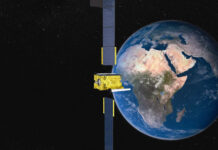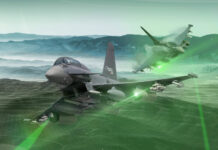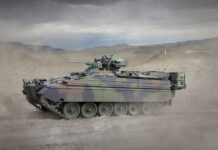Military demands for connectivity show no signs of abating and are only likely to increase in the coming years. Could V-band radio help absorb some the growing communications burden on the future battlefield?
The V-band occupies part of the radio segment of the electromagnetic spectrum spanning from 40-75 GHz, corresponding to wavelengths of between 7.5 mm and 4 mm. The wavelength means the radio wave moves from a peak to a trough and back again across a distance of 7.5 mm for a 40 GHz frequency, or 4 mm for a frequency of 75 GHz. These measurements are important. One of the attractions of V-band radio communications is that it can handle a lot of data traffic. CableFree, a company specialising in wireless networks, says data rates of 1-2.5 gbps are achievable with V-band. Current fourth-generation (4G) cellular communications networks offer rates of around 20 mbps when downloading data into your mobile phone, and circa 5 mbps when uploading data. These figures, corresponding to 0.02 gbps and 0.005 gbps, are notably less than those offered by V-band.
The newer fifth-generation (5G) cellular protocols increase these data rates to circa 130-250 mbps according to the 4G.co.uk website. This is an improvement on 4G but still some way behind V-band even if, as the website continues, some 5G networks are already claiming download speeds of 1 gbps. SDxCentral, an online technology publication, says that uplink and downlink speeds of 10-20 gbps are being suggested for mature 5G networks by the International Telecommunications Union (ITU). The ITU is the United Nations organisation which regulates global use of the radio spectrum.
Why not just use 5G for high data rate communications rather than V-band? Such a question requires a detailed answer. Firstly, 5G uses three wavebands: low (under 1 GHz), mid (1-6 GHz) and high 24-40 GHz). The first problem is congestion. GlobalData, an analytical company, said in May 2023 that global 5G mobile subscriptions stood at 1.7 billion at the end of 2022. The company continued that this number of subscribers could increase to 5.5 billion by 2027. Militaries wanting to use high band 5G for high data communications will have to share this band with civilian 5G users around the world.
Armies deploying 5G networks on the battlefield, or using local 5G networks when deployed, may find these wavebands heavily congested by non-military users. Inundating a local 5G network with military traffic when deployed to an operational theatre could pose problems. Saturating a local network could deprive local civilians of 5G services. Any denial of service risks being detrimental from a ‘hearts and minds’ perspective. Relying too heavily on local 5G networks to carry military traffic could also create security vulnerabilities. Lax local security standards could leave these networks are open to red force eavesdropping.
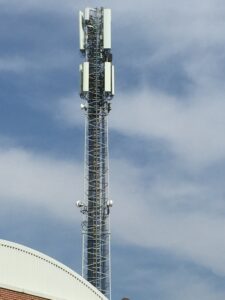
It is instructive that the US Army has a programme called the Integrated Tactical Network (ITN). The ITN is “a suite of communications and networking hardware and software that provides voice and data communications to tactical units,” according to US Department of Defence documents. ITN provides a deployable network to accompany US Army manoeuvre units. This network will provide unclassified tactical communications using standard off-the-shelf, commercially-available capabilities. The logic behind ITN is to offload non-sensitive or unclassified information onto this network to free up secure tactical networks to handle classified traffic. In December 2022, it was reported that tests of a 5G network designed to provide tactical communications on the battlefield had been performed at Fort Bragg, North Carolina. During the test a 5G communications system from JMA Wireless was connected to the ITN. Reports continued that in 2020, the US Army performed tests of 5G networks as conduits between forward operating bases and tactical operations centres at Fort Cavazos, Texas; Fort Irwin National Training Centre, California; Joint Base San Antonio, Texas and Joint Base Lewis-McChord, Washington.
Data Carriage
It makes sense for the military to embrace 5G protocols to assist communications, although congestion and concerns over security are valid. To this end, V-band could yet emerge as an alternative, or a supplement, to and for high band 5G communications for military applications. A key attraction of V-band are its promised high data rates. Why are such data rates possible? Primarily because of the frequencies V-band uses.
Radio waves move digitised traffic. Whether you are making a voice call on your mobile phone, sending a written message, or a photograph or video, your smartphone turns that traffic into data. Your computer does much the same thing when moving traffic across the internet. The sound of your voice, or the text in a message is turned into binary zeros and ones. These zeros and ones are a series of instructions to the receiving phone or computer to perform a series of tasks to replicate the sound of your voice or the data you are sending.
To understand how this works in practice, we can borrow an analogy from the Centre for Democracy and Technology (CDT). Based in Washington DC, the CDT is a “non-partisan, non-profit organisation fighting to advance civil rights and civil liberties in the digital age.” CDT’s explanation invites us to image two people standing apart from each other holding a rope connecting the hand of person A to person B. Person A shakes the rope up and down at a frequency of once-per-second. The resulting wave moves along the rope until it gets to person B. For this demonstration, each time the shake of the rope reaches person B it carries one bit of data. If person A shakes the rope ten times over ten seconds, person B receives ten bits of information. Person A then shakes the rope at a frequency of seven million times a second (made possible for this demonstration). Person B then receives seven megabits of data in that single second. The more person A shakes the rope per second, the more bits person B receives.
Engineers can use a formula to indicate how much data a particular communications link may carry thanks or the Shannon-Hartley theorem. Named after mathematician Claude Shannon (1916 to 2001) and electronics expert Ralph Hartley (1888 to 1970), this provides us with a useful indication of V-band’s data handling strengths versus mobile phone communications. Let us assume that we have a standard third-generation mobile phone.
Publicly-available information tells us that 3G phones can handle voice and data traffic across bandwidths of between 15MHz and 20MHz. Before doing our calculation, we need to know the signal strength of our phone and the strength of the prevailing electronic ‘noise’ in our locale. Once again, publicly available information tells us that our phone may have a signal strength of between -70 dB to -85dB. Naturally and artificially created electromagnetic noise is all around us in the atmosphere. The warmer the day, the more noise there is. Quite simply this is because heat excites electrons, causing them to behave more energetically than at cooler temperatures, which can correspondingly cause interference.
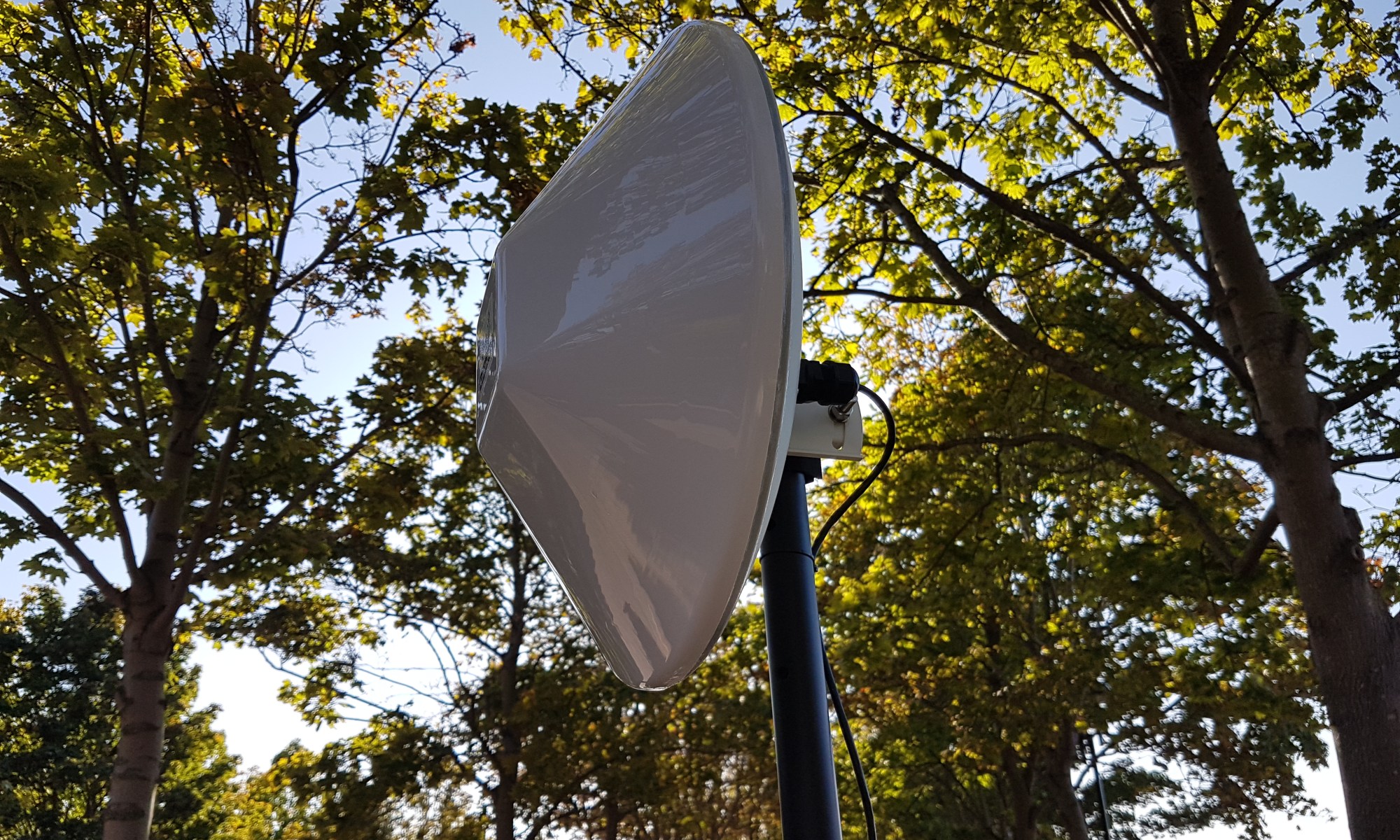
To demonstrate the above in action, we can use a simple scenario. Today, it is a pleasant 28 °C (82.4 °F), giving us -102.05 dB of noise. The important thing here is for our signal to be stronger than the noise. We will assume that we have 15 MHz of bandwidth on our 3G phone with a signal strength of -70dB. This should give us a theoretical data rate of 11.26 mbps. V-band communications typically offer channel bandwidths of circa 5 GHz. We will keep all the other variables the same as in the first calculation and get a total of 3,767.8 mbps. At a stroke, we can see that V-band communications can carry much greater quantities of data.
Data carriage is incredibly important. Quantities of data zooming around a battlefield are only likely to increase in the coming years. In 2012, Milsat Magazine provided intriguing figures on US military bandwidth demands since Operation Desert Storm, waged by a US-led coalition to evict Iraq from Kuwait in 1991. Back in the early 1990s, the US military was generating well under 50 mpbs per 5,000 military members. By 2003, when the US mounted Operation Iraqi Freedom, this had risen slightly above the 50 mbps mark. By 2020, the article estimated this demand would exceed 300 mbps per military member.
Put another way, in the early 1990s each military member generated 10 kbps of data. This figure was predicted to increase to 60 kbps by 2020. How much the US military is expected to use in the future is anyone’s guess. Curiously, there appears to be no discussion, or information, in the public domain regarding current and forecast US military data consumption.
Nonetheless, it is reasonable to assume this will follow an upwards trajectory. The US Department of Defence has embraced the Multi-Domain Operations (MDO) military philosophy. Definitions differ, but this author terms MDO as the inter- and intra-force connection of all military assets (personnel, weapons, sensors, platforms, bases and capabilities) at all levels of war to perform synchronic operations guided by a better quality and pace of decision-making than one’s adversary. As becomes immediately clear, such aspirations require eye-watering levels of connectivity.
This connectivity is essential because these military assets will need to be continually uploading and downloading their data to computer cloud storage. These ‘combat clouds’, as they are known, will be the central repositories for all data generated by these assets. Artificial intelligence and machine learning techniques will manage these data. In turn, the data will be shared to aid command and control (C2), battle management, and intelligence, surveillance and reconnaissance (ISR). In fact, the data will be used to aid pretty much all decision-making on and off the battlefield.
The problem for the US military, or any military planning such a data-reliant approaching to waging war, is ensuring they have the communications links to move this data. It is no good living in a megacity if a single-track steam railway is the only way to travel around the metropolis. Militaries use conventional High Frequency (HF) and Very/Ultra-High Frequency (V/UHF) radios with 3 MHz to 3 GHz wavebands. Conventional radio is backed up by satellite communications, and militaries also use standard telecommunications like traditional copper telephone lines and their fibre optic counterparts. As the US Army is demonstrating with ITN, it is having to think about non-conventional approaches like 5G to absorb some of the data burden. Do such demands open a potential window of opportunity for emerging technologies such as V-band communications?
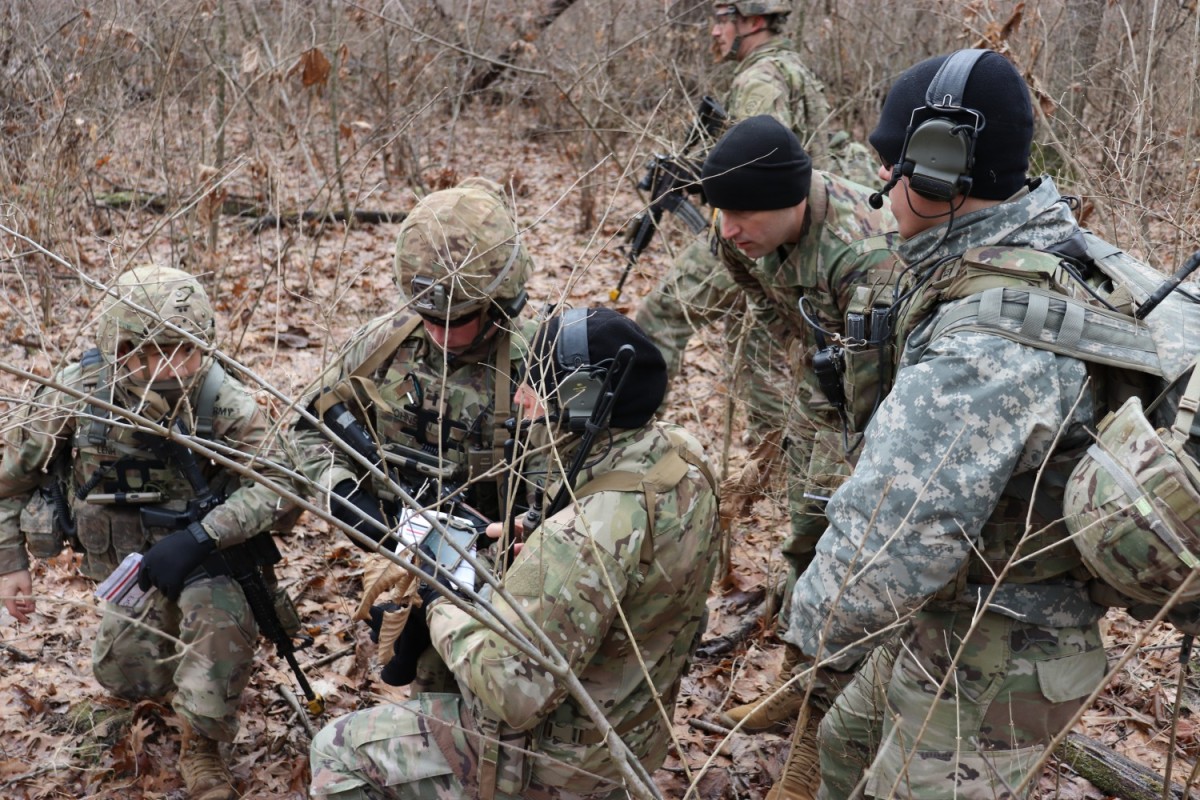
Beamwidth
Another potential benefit offered by the V-band is the narrowness of its radio beams. Beamwidth is an important consideration in Electronic Warfare (EW). A wide beam can betray the presence of a device such as a radar or a radio emitting a signal. To understand how beamwidth works, imagine you are in a large, dark room. You are standing on one side of the room and two individuals are on the other. One person has a large, powerful torch. The other has a torch with a narrow, focused spotlight. Put simply, the wide beam from the large torch will be easier to see than the focused beam from the spotlight. It maybe that you can only see the narrow beam if you are looking directly at it.
Simple calculations reveal how narrow V-band signals can be, and hence how difficult they might be to detect. This is important in helping to firstly mask a V-band radio from discovery, which could inadvertently reveal the presence of troops, platforms or sensors using a V-band transceiver for communications. Secondly, once EW operatives discover a radio they may try to jam the signal or eavesdrop to exploit it for intelligence. If we take an antenna with a 0.5 m (1.6 ft) diameter transmitting a 2 GHz signal, the resulting beam will have a width of 21°. If we take the same antenna but transmit a 57 GHz signal, we get a beamwidth of 0.74°. In reality, engineers calculate a radio’s power and a myriad of other factors into account when calculating beamwidth. Nonetheless, for the purpose of our discussion, this gives a good indication of the narrowness of a V-band signal and hence why this could be difficult for EW operatives to detect.
Range
Like any form of radio communications, V-band has its disadvantages and these typically relate to range and susceptibility to precipitation in the atmosphere. Precipitation creates problems. The frequencies V-band uses have similar wavelengths to the physical size of water droplets which appear in the atmosphere. A frequency of 40 GHz has a wavelength of 7.5 mm, which reduces to 4.28 mm for 70 GHz. As NASA states, raindrops range in size from 0.1 mm to 6 mm in diameter. The problem is that droplets of these size, particularly from 4 mm and above, can absorb some of a V-band signal’s energy. This energy absorption can greatly reduce the signal’s range. Generally speaking, V-band is good for high-bandwidth communications up to circa 2 km (1.2 miles). After this, signal performance can degrade.
Uses
Like all forms of radio communications, be those HF, V/UHF and satellite communications, V-band has pros and cons. Any form of radio chosen by the military for a particular purpose such as ground-to-air/air-to-ground communications results in a trade-off. This compromise is usually the consequence of the desired signal power, the traffic it must carry, the available power to generate that signal and the most practical size of antenna. V-band is not a panacea. It would be no good for long-distance communications on account of its comparatively short range.
That said, it does have some clear applications, one of which could be the connection of unattended sensors on the battlefield which routinely need to share large amounts of data. Let us suppose a detachment of troops has deployed concealed acoustic sensors, ground-surveillance radars and conventional/infrared optronics in several places. Each sensor has a V-band radio with a range of about 1 km (0.6 miles). These sensors are left to continually monitor the locale in their field-of-view. As such, they continually generate large quantities of data regarding the goings-on in their environment. Most of this data will be superfluous to the troops deploying the sensors and others elsewhere in the force.
However, each sensor has an edge computing application incorporating Artificial Intelligence (AI). The sensor’s processors are trained to notice something of interest. For example, the radar detects a troop of monkeys moving through the trees. The radar’s computer recognises these as primates and ignores them. A few moments later a military vehicle drives through the same area. The processor immediately recognises this as a military vehicle. All the radar information pertaining to this vehicle the processor has gathered is transmitted on the V-band link to a laptop carrying sensor management software. The laptop performs additional processing, ascertaining the vehicle type, determining it as potentially hostile and predicting its possible movements. Given the size of the V-band link, the radar continues to monitor the vehicle and send the sensor management software updates for as long as the vehicle stays in the radar’s field-of-view. V-band is perfect when electromagnetic discretion is needed, along with short range, and large data carriage.
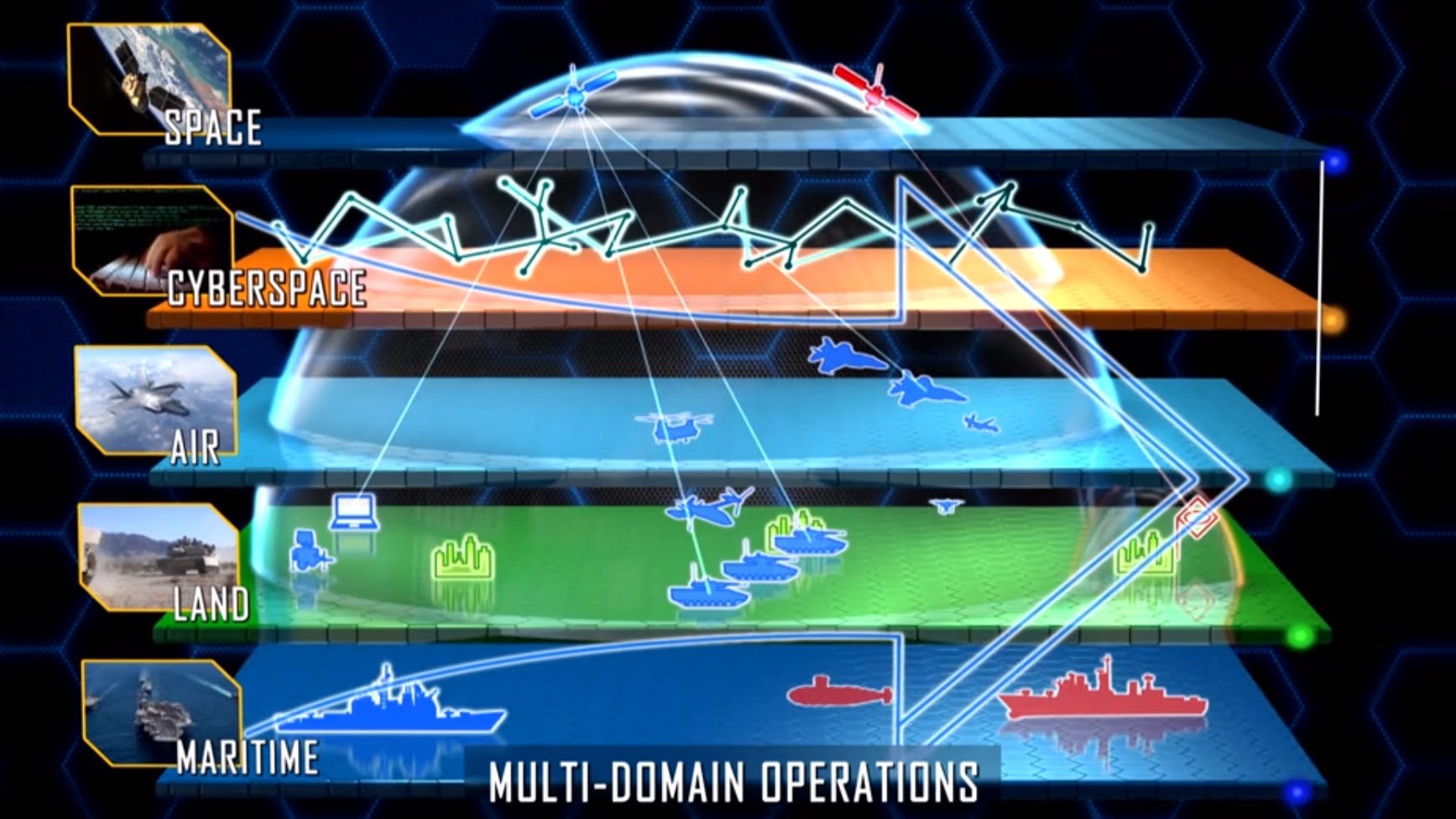
The advent of MDO, as discussed above, underscores the seemingly insatiable desire for secure, efficient, redundant and robust communications links. The data burden MDO looks set to impose shows that the ability of conventional military communications links to satisfy these demands is questionable. The US Army’s adoption of technologies such as 5G show that the force is looking seriously at non-traditional military communications. However, 5G will only be able to solve part of the puzzle. Other communications technologies must also be brought to the fore. Perhaps the time has come to look seriously at V-band?
Thomas Withington





